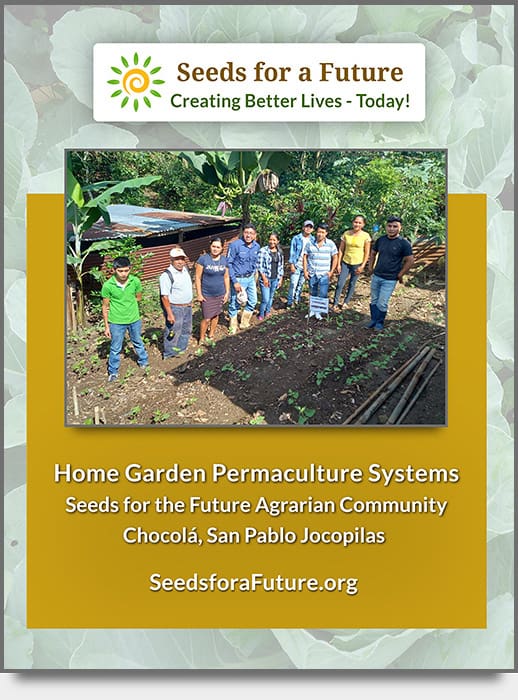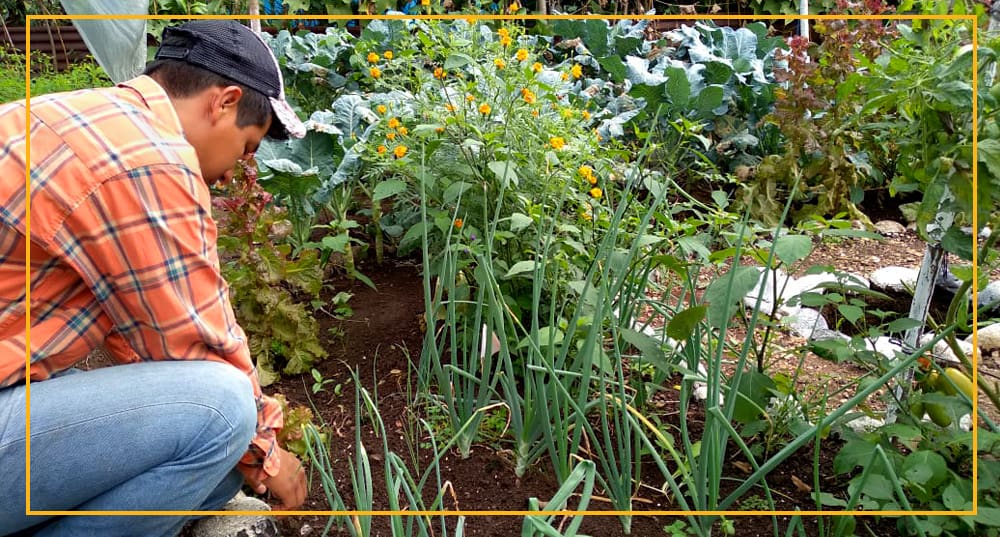
Permaculture, Regenerative Agriculture, and Sustainability Training in Guatemala
Because permaculture and regenerative practices are ideal for generating long-term food security, they've been a centerpiece of the Seeds for a Future Program since 2009.
We have a PDF below of the Permaculture Systems and Designs that we incorporate with families and communities throughout rural Guatemala.
A key component of the Seeds Program is working with rural Guatemalans on how to sustainably produce thriving nutrition gardens using permaculture systems and regenerative farming methods.
The resources and needs of every family in the Seed for a Future Program differ, creating unique opportunities for the team to best align needs and resources with each family.
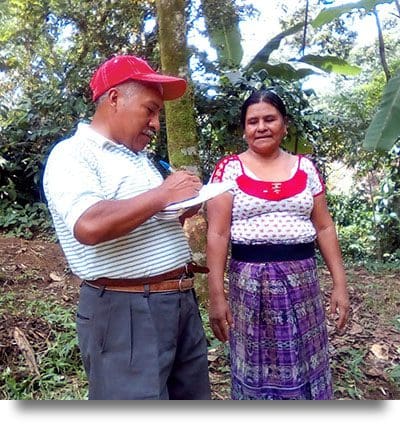
During the planning visit to a participating family’s home, our team and family members assess available space and health needs to decide what to include in their nutrition gardens and animal protein sources, such as poultry.
They also review the feasibility of planting longer-term producers such as fruit trees or bamboo, which produce edible shoots and excellent building material.
The team spends at least 12 months with the family, coaching and mentoring them during weekly in-home visits. The Program supplies initial seeds or seedlings and starter animals, and training includes the skills to grow their own “replacement” plants and animals to produce a self-sustaining system.
This PDF analyzes the proven and productive permaculture systems and designs used by Seeds for a Future and program participants.
This illustrated PDF offers a qualitative and quantitative description of the mandala, vertical, and raised bed garden systems commonly found in permaculture practices in Guatemala.
Outlining the Permaculture Systems and Design used by the Seeds Program
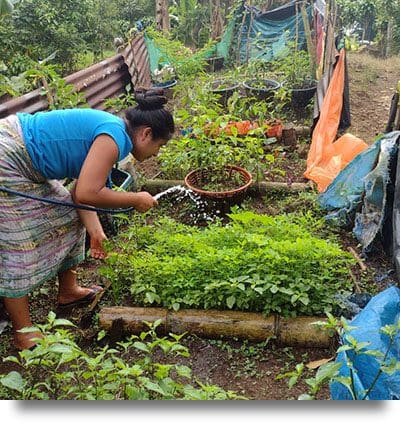
Permaculture gardens promote efficiency of space and resources while creating sustainable systems and practices for generations to come.
The flexibility of permaculture means families which may not have space for a garden can use their patios, walls or fences, and even indoor spaces as growing areas.
Seeds for a Future’s permaculture principles and regenerative agricultural practices include:
- Nutrition gardens contain a diversity of plants that flourish locally and are culturally accepted.
- The family’s available space is carefully planned and designed to ensure efficient yields and sustainability.
- Organic practices are emphasized.
- Families grow their own seedlings and manage poultry and animals to ensure their own renewable supply.
- Recycling, reusing, and repurposing materials and the use of composting are prioritized.
- Environmental stewardship is valued and reinforced.
If you have any questions regarding Seeds for the Future or permaculture practices, Connect with us for more information.
Demonstration Centers
As families succeed in raising plants and animals according to the plan created when they joined the Program, they begin to see their space and resources differently and think about how they can increase or diversify the food they produce.
For demonstrating the methods and practices commonly used by the Program's participants, we have nine Demonstration Centers dispersed throughout participating communities and neighborhoods.
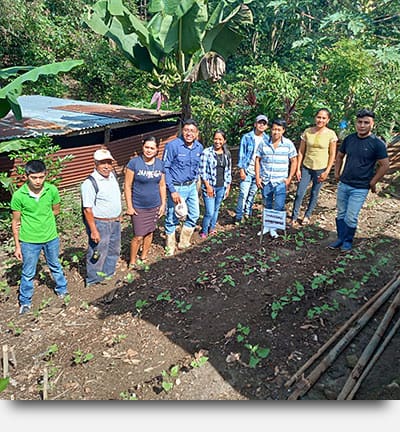
Each Demonstration Center showcases permaculture principles and regenerative farming possibilities that families can adapt to fit their own space and resources.
Our main Demonstration Center is in a neighborhood house in Chocolá – our team headquarters.
Chickens and other birds are housed where they contribute to the composting process, a typical permaculture practice. Families can see examples of animal housing suitable for production at the “family food” level, or for a micro-business. We research new plants to see if they will thrive and offer success and variety in family gardens.
In addition to our HQ Center, neighborhood Demonstration Centers blossom when a participant family has special success. At these close-by centers, local families can see innovative practices, new ideas, or ancient techniques remembered from ancestors, all proudly shared by the resident family.
Sharing, inventing, researching, and learning – even from failure – are vital to the success families achieve, and to our program’s sustainability and its expansion throughout a community.
Let's Stay Connected
Receive our latest stories and updates about restoring nutrition and health, the impact of sustainable change, and the power of self-reliance.
Our Partners:


